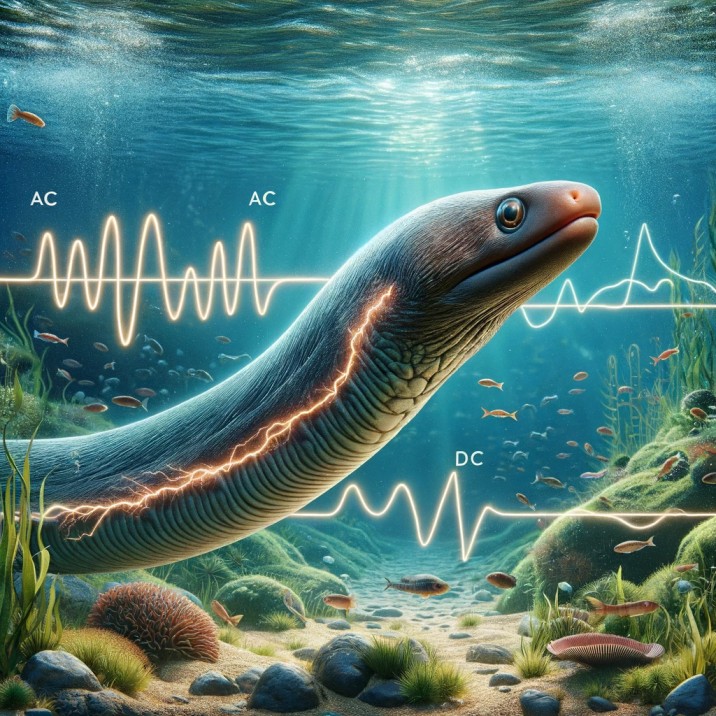Are electric eels AC or DC? They generate electricity that is more like DC (Direct Current). When an electric eel shocks something, it’s like a battery releasing its power all at once. The electric shock goes in one direction from the eel to its target. It doesn’t change direction like the electricity in your home.
To make things easier we will explain AC and DC:
- Direct Current (DC): Electricity flows in one constant direction. Think of a battery powering a flashlight. The electricity only goes one way, from the battery to the light bulb.
- Alternating Current (AC): Electricity changes direction back and forth rapidly. This is what’s used in households to power appliances. The current alternates or switches direction many times per second.
Unlike AC, where electric charge changes direction periodically, DC represents a unidirectional flow of electric charge. A typical example of DC is a battery powering a device, where electricity flows steadily in one direction. This characteristic is akin to the electrical discharge of electric eels.
Electric eels possess specialized cells called electrolytes. When triggered, these cells open ion channels, allowing a flow of ions and creating a voltage difference. This process is similar to a battery discharging electricity. In eels, these cells are stacked, each contributing to a higher voltage, capable of producing a substantial shock.
This shocking ability is not just for defense. Electric eels use it for hunting and navigation in murky waters. They emit low-voltage discharges for electrolocation, detecting objects in their environment, and high-voltage ones for stunning prey or deterring predators.
Interestingly, the electric eel’s power is more sophisticated than a simple DC current. Research has revealed that the pattern of their electric discharge can vary, indicating a level of control over their electrical output. This adaptability is crucial for their survival, allowing them to modulate their electric fields based on the context – be it hunting or self-defense.
The electric eel’s ability is not just a wonder of nature but also a subject of scientific study. Researchers are exploring bioelectrogenesis – the process of generating electricity by living organisms – for insights into creating new, bio-inspired energy sources. The electric eel, with its DC-like electrical prowess, stands as a remarkable example of nature’s ingenuity, offering potential blueprints for technological advancements.
While the electric eel’s electricity is reminiscent of DC, it presents a unique natural phenomenon that transcends simple categorization. It’s a testament to the wonders of the natural world and the endless possibilities it holds for scientific exploration.

